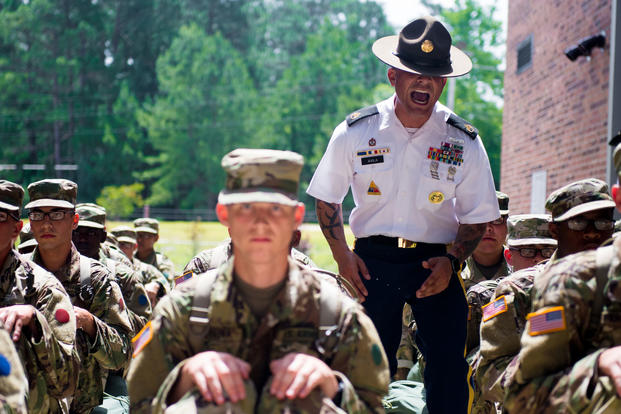U.S. Army leaders pledged Monday to improve initial entry training by cutting the drill sergeant-to-trainee ratio in half.
Currently, Basic Combat Training (BCT) has a drill sergeant-to-trainee ratio of about one to 20, and advanced individual training (AIT) has a drill sergeant-trainee ratio of about one to 40.
"Those ratios are way too high ... and that is because we intentionally over the last 17 years … trimmed our institutional force and reduced the numbers of people in the institutional force in order to feed the fight in Iraq and Afghanistan and to make sure those deploying units had enough people," Army Chief of Staff Gen. Mark Milley told a group of reporters at the 2018 Association of the United States Army's Annual Meeting and Exhibition.
The Army plans to "cut those ratios in half," he said. "We are committed this year to reduce the drill instructor-trainee ratio."
The service recently announced that it plans to launch pilot programs aimed at extending one-station unit training (OSUT) for armor and other combat specialties similar to the one that is extending Infantry one station unit training at Fort Benning, Georgia, to 22 weeks.
Recruits in infantry OSUT traditionally go through nine weeks of Basic Combat Training and about four-and-a-half weeks of infantry AIT. The pilot, which began this summer, adds eight weeks of training time to hone marksmanship, land navigation and other key combat skills.
In addition to adding training time, Army officials are trying to increase the amount of individual time soldiers spend with drill sergeants.
Milley didn't say how many drill sergeants the service is adding but explained that part of the plan involves adding platoon sergeants and commissioned officer platoon leaders to each platoon in BCT and AIT.
"So we want to up our game in the world of basic and AIT, not just in the length but in the quality and in the attention given to each trainee by the assigned cadre," he said. "I think that will go a long way toward rebalancing the force."
Army Secretary Mark Esper said the effort starts with "bringing in high-quality people" to the Army. "Then we want to give them the very best training we can, and that means 22 weeks a training [program of instruction] that's geared toward the National Defense Strategy and the threats we think we will see in the future, and the right ratios of drill sergeants and platoon sergeants," he said.
-- Matthew Cox can be reached at matthew.cox@military.com.













